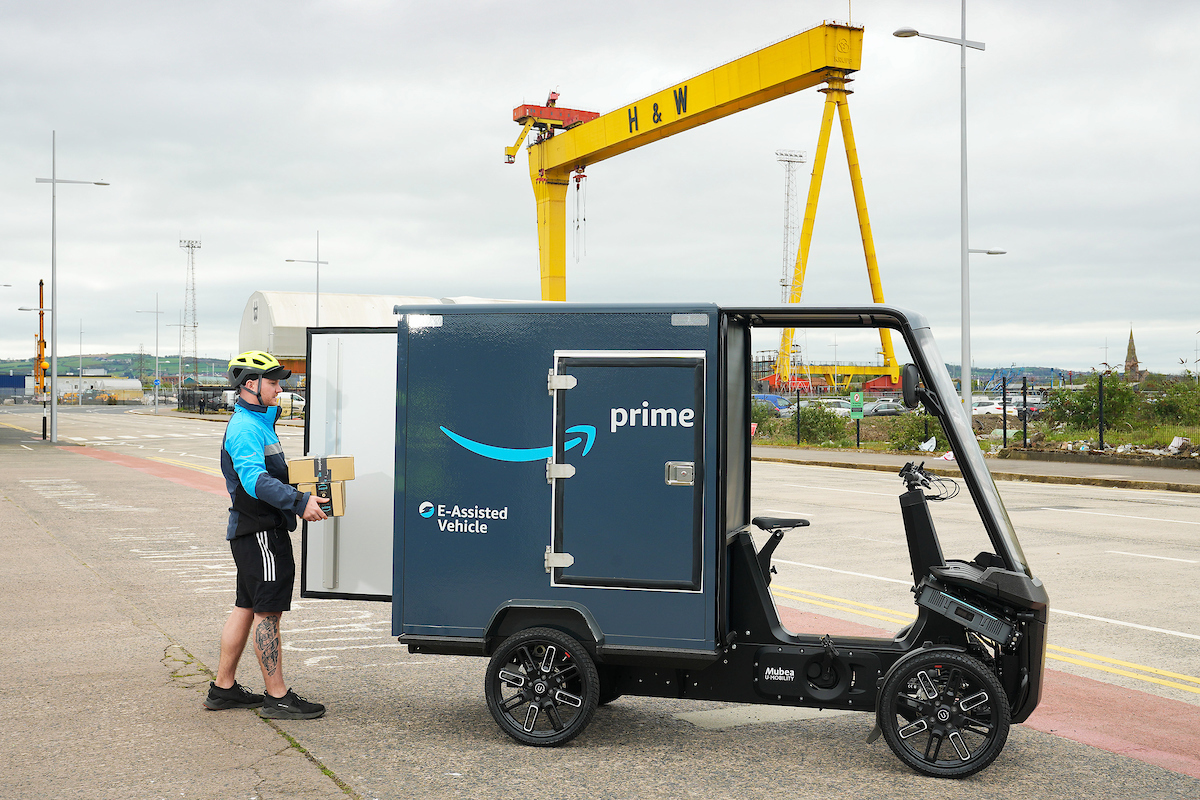After years of bolting on IT solutions to cope with each new channel retailers are having to face up to the wider issues of systems integration to handle the demands of omnichannel retail, reports Penelope Ody
As everyone discovers eventually, you can make do and mend for only so long. Sooner or later that temperamental dishwasher or ageing car just has to be replaced. For many multichannel retailers with a mish-mash of legacy systems and newer bolted-on IT solutions, that moment has now come.
It was a different matter when online sales were one or two per cent of turnover: inefficient technology or labour- intensive manual processes could cope. Today, with online business heading for 20 per cent or more in some sectors, it is a very different matter. Add mobile, increased digital technology in-store, and greater dependence on wi-fi and it is small wonder that many of those flaky old IT systems are struggling to cope.
And it’s not just the IT: basic broadband routers are being replaced with more reliable leased lines, typically with a 50-fold increase in cost. “Retailers can no longer afford to be offline,” says Paul Leybourne, head of sales at Vodat. “It’s not just that they need real-time information but their customers want to connect to the network too.”
Those customers may be using mobiles to check prices or place orders while staff will be doing almost the same. “Over the past 18 months we’ve seen rapid growth in mobile and greater adoption of tablet technology,” says David Hogg, commerce solutions lead for Europe at IBM, “and it is becoming harder for many retailers to adapt and integrate these sorts of technology into their systems. Many of the cross-channel initiatives introduced a few years back were very tactical quick fixes. That’s fine – retailers will always have to do tactical fire-fighting – but eventually they also have to sort out what is wrong with the platform.”
CUSTOMERS DRIVING CHANGE
At the same time, consumers have been adopting new digital technologies far more rapidly than many predicted and their expectations have grown just as quickly. According to a recent survey by Manhattan Associates, almost two-thirds of shoppers questioned suggested that 90-minute delivery or click and collect within two hours of ordering were becoming key influences on their buying decisions. This makes life difficult for retailers, what with the need for real-time inventory visibility, fully integrated order management systems, highly flexible stock allocation, well-managed in-store processes, and potentially major store redesign to cope with increasing numbers of shoppers queuing for click-and-collect orders. Small wonder many chief information officers find the prospects daunting.
“Smaller retailers with maybe 100 shops and a single brand can easily become omnichannel,” adds Hogg, “but for big retailers with multiple brands and a growing number of international markets the complexities increase exponentially.”
TIME FACTOR
Lee Gill, VP retail strategy, EMEA, at JDA Software agrees. “No-one really looked at the longevity of ecommerce solutions or how they would scale,” he says. “Additional systems have been bolted on – but you can’t handle 20-40 per cent of your sales with bolt-on technology. Retailers have always been reluctant to deal with underlying technology issues, but in an omnichannel world you have to provide a seamless homogenous customer journey that allows shoppers to buy anywhere and retailers to fulfil from anywhere – and that also involves good stock allocation systems and workforce management tools.”
With stores increasingly doubling as fulfilment centres for click and collect, the practicalities of ensuring the right goods are available in the right place can be challenging – not least due to lack of investment.
“Retailers have spent a lot of money on the systems front-end and concentrated on content and visuals,” says Jas Virdee, partner at Kurt Salmon, “but they have not paid much attention to the back end – especially order fulfilment. There is a lot of talk about seamless cross-channel operations but the sort of integration needed just isn’t on the CIO’s agenda. Most come from a bricks-and-mortar world and they have legacy systems running those operations. Most still have two separate systems running the ecommerce distribution centre and the store DC, even when they are trying to put both under one roof. A lot is still being done manually and that is not scaleable. They are not doing enough to focus on creating a single multichannel inventory.”
Certainly the last few months suggest that some retailers at least are realising this fundamental flaw in their multichannel operations, with Marks & Spencer and John Lewis , amongst others, announcing massive multimillion pound investments in supply chain improvements.
For Craig Sears-Black, UK managing director at Manhattan Associates, poor order fulfilment management is not the only supply chain issue that should be on the agenda. “If retailers need to have orders delivered in 90 minutes or collected from stores within hours then they have to have the stock in convenient locations close to their customer base,” he says. “The stock record also has to be accurate in real-time or near real-time. That could mean using RFID but is more likely to involve frequent stock counts and increasing buffer stocks to ensure that items are available in each location for online orders. But holding more stock in more locations is expensive, as is regularly transferring items between branches. If an online customer in Loughborough, for example, wants a dress which is only available at a branch in Truro, what are the real costs involved in fulfilling the order? It’s the sort a question retailers will have to start asking themselves.”
NEW NUMBERS TO ANALYSE
Estimating the total ‘cost to serve’ is not the sort of sum many retailers regularly calculate, but as the cross-channel options proliferate it could become a vital KPI involving not only the cost of shipping that dress overnight from Truro, but possibly enabling a sales assistant to negotiate price matching with the customer in-store as well. While Manhattan is adding ‘total cost to serve’ functionality to its order lifecycle management suite, others are focusing on ‘profit per order’ or ‘profitable promising’ tools. “It is changing the way retailers can make decisions,” says Andrew McGregor, co-founder and CEO of eCommera . “Traditionally they’ve dealt with information in silos and couldn’t optimise across the channels – stock was fragmented and there was no real idea of the cost of customer acquisition. Now you can use decision analytics to look at the real costs and the impact on profit of each action.”
With showrooming on the increase and shoppers regularly checking out competing prices while in store, retailers no longer regard allowing staff to enter into price-matching discussions as an anathema. Lee Gill argues that tools such as JDA’s ‘profitable promising’ can provide staff with well-defined rules based on customer loyalty or a shopper’s potential lifetime value to prevent such discussions eroding margins. “They need to be told that if the customer is a ‘gold level’ loyalty shopper then they can take x off the price or if only a ‘bronze level’ then y – so they need access to customer information as well as systems with the right sort of inbuilt business rules,” he says.
That customer information will certainly exist somewhere within the retail organisation but, just as with inventory, it is unlikely to be neatly in one place. “CRM systems are still one of the weakest areas for most retailers,” says David Hogg. “They may have been around for 25 years but they were not designed to deal with an omnichannel world. There can be call centre data, loyalty card data, website records, or more – and all is different silos. Now you can add social media information or perhaps text enquiries that come in via mobile or the website as well. It makes CRM one of the most challenging areas for many retailers and obtaining a ‘single view’ of the customer difficult.”
As Hogg also points out, the explosion we’re seeing in data – big data – is making the whole area of customer analytics even more confusing. “It’s easy to become over-excited by the possibilities,” he says. “People change and how much analysis is cost-effective? How much can you find out – and how much of that can you realistically use?”
PLANNING FOR MOBILE
As well as better order management, real-time stock visibility, cost to serve tools, data analytics and a single view of the customer, today’s retail IT shopping list could also cover the need to cope with mobile, for staff as well as customers; an ecommerce-enabled front end; more robust wi-fi; and an integrated and scaleable interface to allow them to adopt, quickly and easily, whichever new channels emerge tomorrow. And all at a time when technology is moving faster than ever before.
“Retailers are beginning to understand that they can’t keep up with developments,” says Stefan Schmidt, director of product strategy at Hybris . “Cross-channel touchpoints are moving so fast that it can be really difficult for retail systems to adapt.”
The Hybris solution has been to make its API (application programming interface) readily available. “If you have an open standard then others can communicate with you and you can experiment with new devices more easily.”
Along with social media and a plethora of mobile devices, Schmidt points to emerging home-based shopping technologies providing ordering opportunities that bypass the website: rather like the waste-bin that would automatically re-order your toothpaste predicted by Forrester back in the 1990s.
“Retailers need a platform that allows them to be open to such developments,” he says. “We already have weight scales that will automatically send details of your weight to an app so that you can monitor changes. Why not send the information to your shopping list and supermarket so that foods are suggested which would help with the diet? Everything is connected and these technologies will be more relevant in future for personalised offers.” For retail IT teams already grappling with the thought of orders arriving via interactive TV or Google Glass, bathroom scales managing the weekly grocery shop may just be the stuff of nightmares.
Speaking from Experience
ANALYSE AND PERSONALISE
“Retailers need to develop a mindset that will analyse data in such a way as to create offers that will entice a shopper to come back. Currently, too many are just blindly running promotions and sending out endless emails. ”
Jas Virdee, partner , Kurt Salmon
JOIN UP THE CHANNELS
“The fundamental driver for retailing is to maximise sales and minimise markdowns and you can’t do that if you treat channels in isolation. It means a change in business culture and that can be difficult for many retailers where store ops are still seen as key.”
David Hogg, commerce solutions lead for Europe, IBM
ADAPTING TO FEWER STORES
“Retailers are already reducing their estates and if you have fewer or smaller stores which also have to handle click and collect, then you need better inventory management and a just-in-time supply chain with smaller more frequent deliveries and mixed consignments.”
Lee Gill, VP, retail strategy, EMEA, JDA Software
MAKE THE JUMP
“Some retailers still have legacy systems that can’t cope with click and collect so adding that sort of service means a very significant investment and major disruption. But it’s do or die: they have to make that leap and can’t keep putting it off.”
Gavin Masters, head of product consultancy, Maginus






